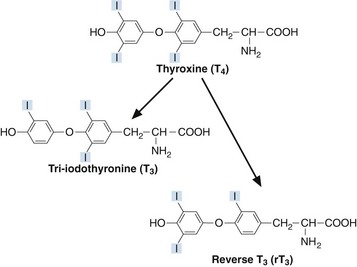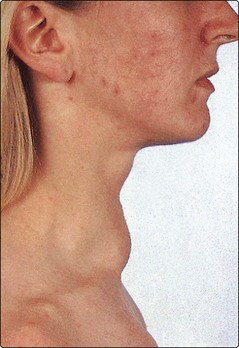44 Thyroxine (T4) and tri-iodothyronine (T3) are together known as the ‘thyroid hormones’. They are synthesized in the thyroid gland by iodination and coupling of two tyrosine molecules whilst attached to a complex protein called thyroglobulin. T4 has four iodine atoms while T3 has three (Fig 44.1). A goitre is an enlarged thyroid gland (Fig 44.2). This may be associated with hypothyroidism, hyperthyroidism or a euthyroid state. Globally, iodine deficiency is the commonest cause of goitre. The WHO estimates that approximately 2 billion people have an inadequate iodine intake making it the commonest preventable cause of neuro-developmental problems. In many developed countries this problem has been overcome by the addition of iodine to a staple food such as iodised salt.
Thyroid pathophysiology
Introduction
Goitre
Thyroid pathophysiology





